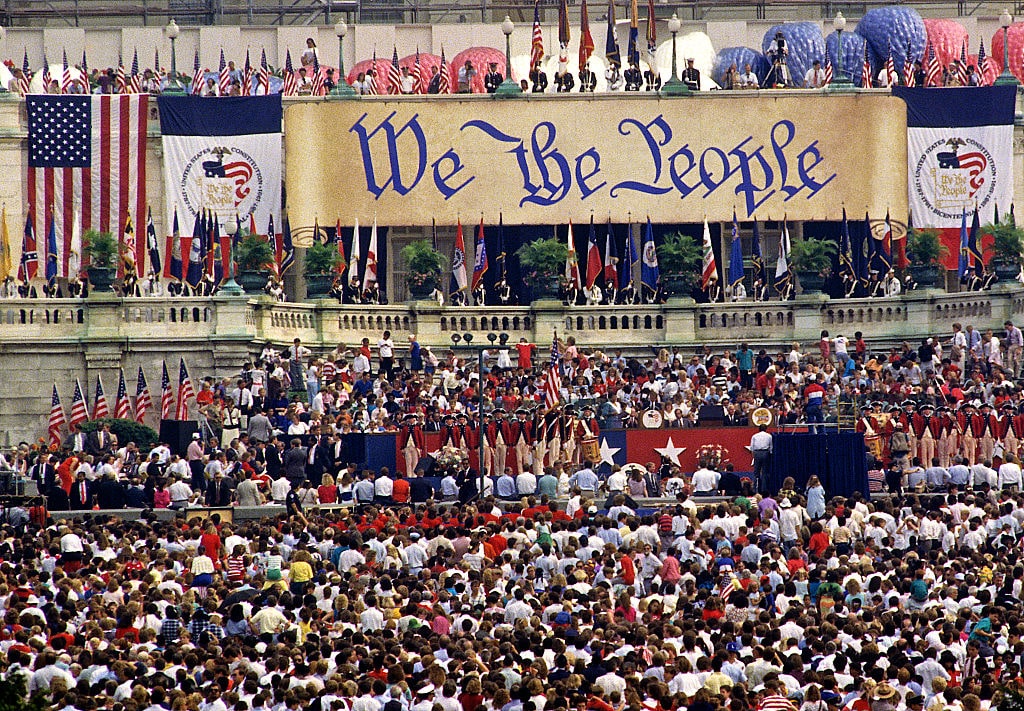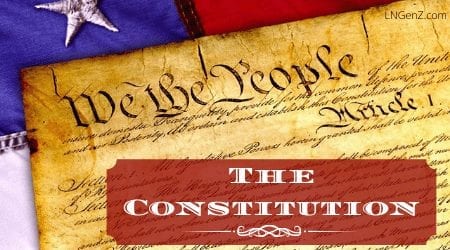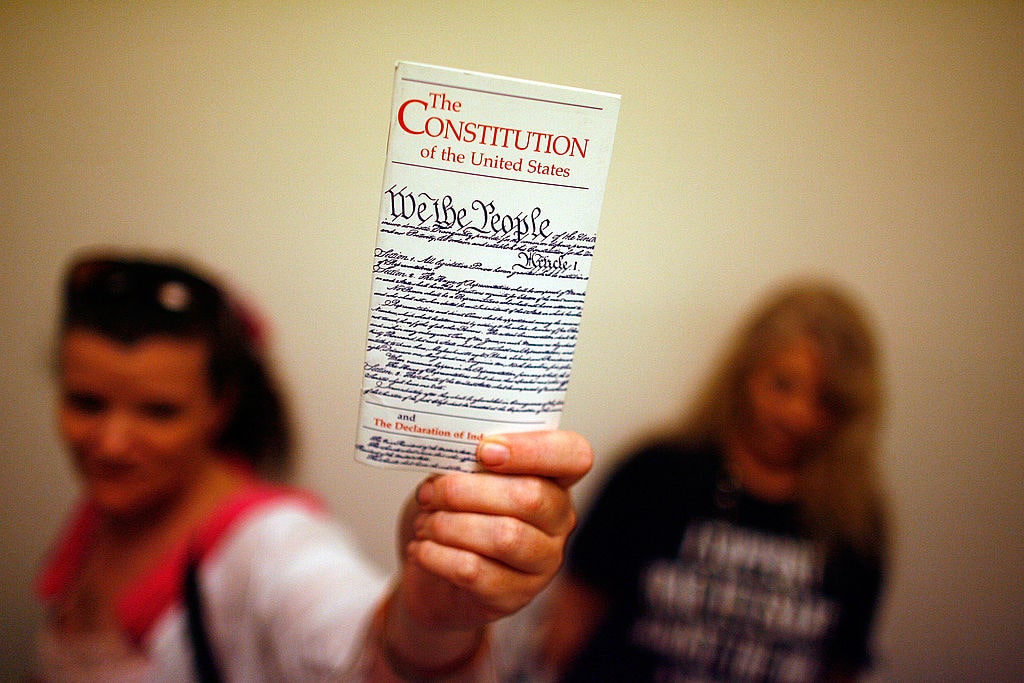-
Halloween
- The Story Behind Halloween – Lesson
- The Story Behind Halloween – Quiz
- Are You Too Old To Go Trick-Or-Treating? – Lesson
- Look out for the Blue Pumpkin – Lesson
- Is the White House Haunted? – Lesson
- Is the White House Haunted? – Quiz
- Mummies Discovered in Egypt – But That’s Nothing to Fear – Lesson
- Salem Witch Trials: When Being Called a Witch Meant Death – Lesson
- Halloween Around the World: It Isn’t Just Costumes and Candy – Lesson
- Halloween Around the World: It Isn’t Just Costumes and Candy – Quiz
-
Thanksgiving
- The Evolution of Thanksgiving – Lesson
- The Evolution of Thanksgiving – Quiz
- The Political Roots of Thanksgiving – Lesson
- The Political Roots of Thanksgiving – Quiz
- Turkey for Thanksgiving – But Why? – Lesson
- Turkey for Thanksgiving – But Why? – Quiz
- This Thanksgiving, Consider Helping the Less Fortunate – Lesson
-
Christmas
-
Easter
- Good Friday: Christ Carried Sin to the Grave – And Left It There – Lesson
- Good Friday: Christ Carried Sin to the Grave – And Left It There – Quiz
- Easter Traditions: From Rabbits to Egg Jarping – Lesson
- Easter Traditions: From Rabbits to Egg Jarping – Quiz
- Easter Monday and Egg Rolling at the White House – Lesson
- Easter Monday and Egg Rolling at the White House – Quiz
-
Federal Holidays and Observances
- New Year’s Day: Just as Political as Anything Else – Lesson
- This Presidents’ Day, Let’s Remember the Weird – Lesson
- Astounding Facts about US Presidents – Lesson
- Astounding Facts about US Presidents – Quiz
- Memorial Day: A Time of Honor and Respect – Lesson
- Memorial Day: A Time of Honor and Respect – Quiz
- From Decoration Day to Memorial Day – Lesson
- From Decoration Day to Memorial Day – Quiz
- Who Was the Poppy Lady, Moina Belle Michael? – Lesson
- Who Was the Poppy Lady, Moina Belle Michael? – Quiz
- The Origins of Flag Day – Lesson
- The Origins of Flag Day – Quiz
- America’s Flag – An Evolved Banner for an Ever-Changing Country – Lesson
- America’s Flag – An Evolved Banner for an Ever-Changing Country – Quiz
- Celebrating the 4th of July – Lesson
- Celebrating the 4th of July – Quiz
- Who Should We Thank for Labor Day? – Lesson
- Who Should We Thank for Labor Day? – Quiz
- Constitution and Citizenship Day – Lesson
- Constitution Day – The First Day of Constitution Week – Lesson
- Constitution Day – The First Day of Constitution Week – Quiz
- The Political Origins of Columbus Day – Lesson
- The Political Origins of Columbus Day – Quiz
- Columbus Day or Indigenous Peoples’ Day? – Lesson
- Columbus Day or Indigenous Peoples’ Day? – Quiz
- Veterans Day: A Day to Honor Those Who Served – Lesson
- Veterans Day: A Day to Honor Those Who Served – Quiz
-
Other Traditions
- Valentine’s Day Love Poems – Lesson
- Love Poems for Valentine’s Day – Lesson
- Who Was St. Valentine? – Lesson
- Who Was St. Valentine? – Quiz
- No Love for Valentine’s Day in the East – Lesson
- No Love for Valentine’s Day in the East – Quiz
- Beware the Ides of March – But Why? – Lesson
- Beware the Ides of March – But Why? – Quiz
- St. Patrick’s Day: A Celebration of the Irish – Lesson
- St. Patrick’s Day: A Celebration of the Irish – Quiz
- May Day: Dancing ‘Round the Maypole – Lesson
- May Day: Dancing ‘Round the Maypole – Quiz
- Cinco de Mayo: Celebrating Mexico’s Victory in Puebla – Lesson
- Cinco de Mayo: Celebrating Mexico’s Victory in Puebla – Quiz
- Mother’s Day: The Anti-War Effort Turned Holiday – Lesson
- Mother’s Day: The Anti-War Effort Turned Holiday – Quiz
- Father’s Day: More Than Just a Day for Ties – Lesson
- Father’s Day: More Than Just a Day for Ties – Quiz
- Presidential Fathers: Responsible for Their Kids and the Country – Lesson
- Presidential Fathers: Responsible for Their Kids and the Country – Quiz
- Proof of the Hanukkah Story Found? – Lesson
- Proof of the Hanukkah Story Found? – Quiz
Constitution Day – The First Day of Constitution Week – Lesson
A time to celebrate and learn about the foundation of the United States.

(Photo by Mark Reinstein/Corbis via Getty Images)
The Constitutional Convention was a meeting of delegates from the 13 original states. Most of the attendees didn’t plan to create a new system of government – they intended to discuss and fix the old Articles of Confederation they had been using. But some Framers had a different idea: They wanted a brand new frame to set out how the government should be run.
After three months of debate, a majority of the delegates signed the new plan. On September 17, 1787, 39 out of the 55 delegates signed one of the United States’ key founding documents – the Constitution. Even so, the Constitution couldn’t go into effect until nine out of 13 states had approved it. A few months later, the ninth state ratified it, and the Constitution finally went into effect on March 4, 1789.
Now Americans celebrate the first signing every September 17, called Constitution Day. Many also observe the week that follows, known as Constitution Week.
Constitution Day
Constitution Day was officially created in 2004, thanks to a bill sponsored by Senator Robert Byrd. Before then, the occasion was known as Citizenship Day. Byrd’s law made schools and government offices run programs on September 17 to help people learn about America’s founding.
On the first Constitution Day, in 2005, Byrd declared:
“Just as the birth of our nation depended on the quality, knowledge, and experience of the men who gave it life, its continued vitality depends on the efforts of our generation, and of future generations, to keep the vision of its Framers alive.
(Photo by Chip Somodevilla/Getty Images)
“It depends on the personal commitment of each and every one of us to learn, to understand, and to preserve the governing principles that are set forth so clearly and powerfully in the text of our remarkable Constitution.”
Constitution Week
The week-long celebration was started by a group called the Daughters of the American Revolution (DAR). Founded in 1890, the DAR is a women’s group with more than 950,000 members. It all began when four women “felt the desire to express their patriotic feelings and were frustrated by their exclusion from men’s organizations.” So they started their own. The women worked to commemorate those who “fought to make this country free and independent.”
The group’s aim is to keep alive “the memory and spirit of the men and women who achieved American Independence.” Another goal is to follow George Washington’s instruction. He told Americans in his Farewell Address “to promote, as an object of primary importance, institutions for the general diffusion of knowledge.” In other words, Washington hoped the people would promote education and knowledge for all Americans.
 In 1955, the DAR asked Congress to assign a week each year for celebrating the Constitution. A law to create Constitution Week was signed on August 2, 1956, by President Dwight D. Eisenhower.
In 1955, the DAR asked Congress to assign a week each year for celebrating the Constitution. A law to create Constitution Week was signed on August 2, 1956, by President Dwight D. Eisenhower.
Today, the DAR is still involved in the week-long event, promoting celebrations across the country.
Celebrating the Constitution
One common way to celebrate Constitution Week is to learn something about the Constitution and what it means for America. Lots of communities put on special events. The DAR holds an annual event called Bells Across America: All over the country, bells are rung for a full minute at 4 p.m., which is around the time the Constitution was signed.
